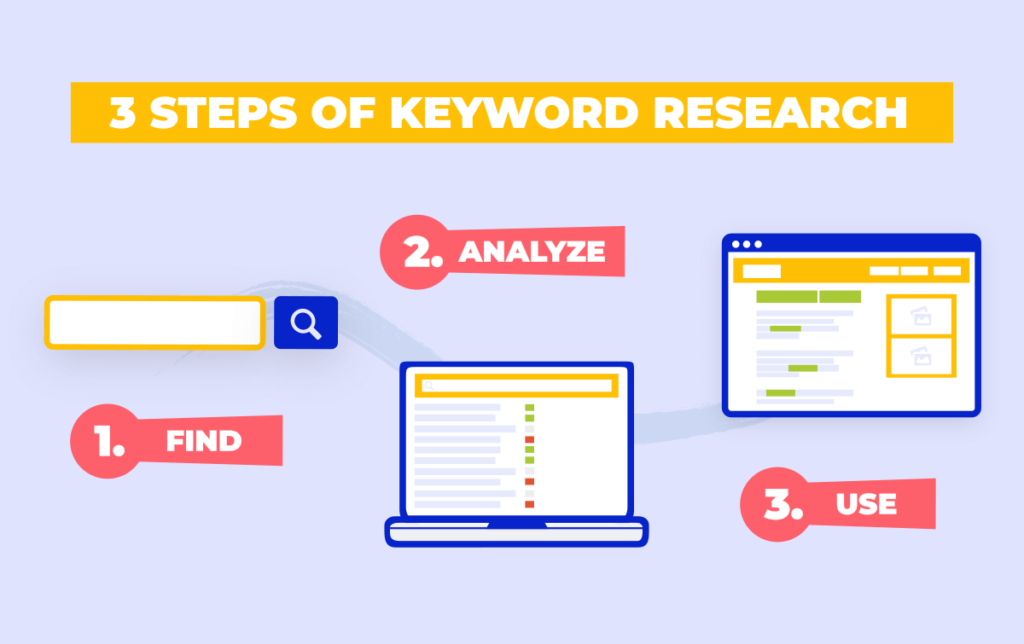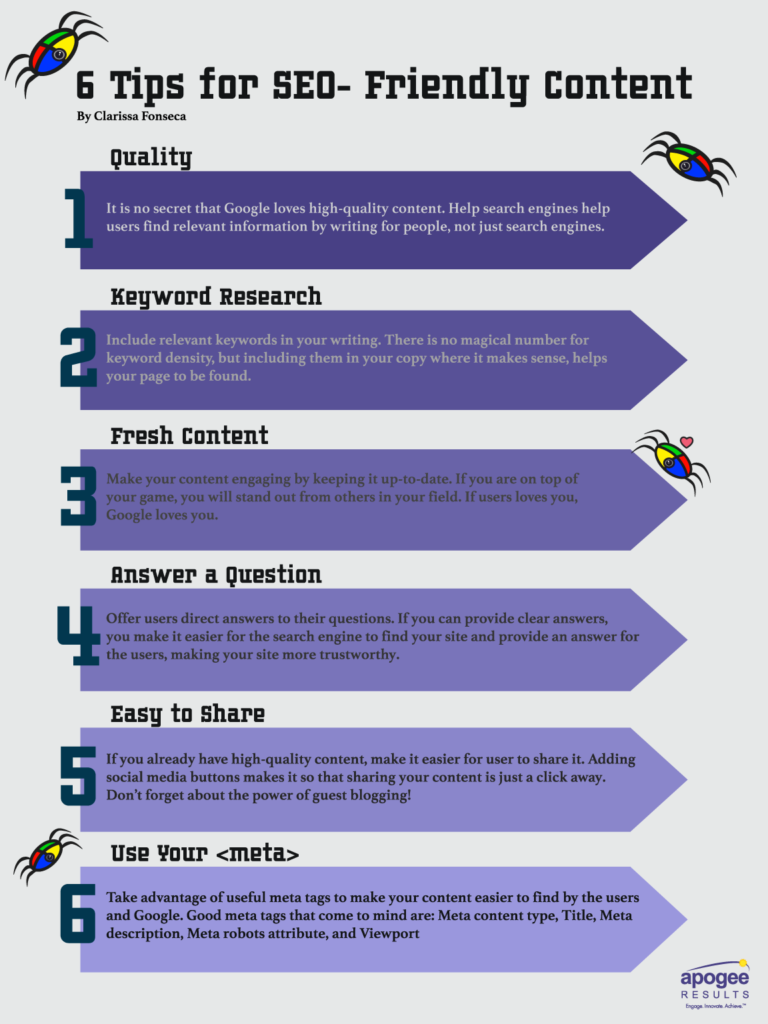- Home
- Blog
- A Step-by-Step Guide to SEO Competitor Analysis

Search engine optimization (SEO) and keywords are the backbones of any marketing strategy. Keywords shape the type of content you create for your website, social media accounts, and guest posts.
However, keywords are among the most competitive items in the marketing world. You need to understand how to use different types of keywords and how your competitors are using these keywords. This is where SEO competitor analysis comes into the picture.

Source
This blog outlines a step-by-step process you can follow for SEO competitor analysis.
Defining SEO Competitor Analysis
How many results do you get when you type your business’s service in Google? We’d reckon hundreds, thousands, or maybe a little more. Your potential customers are seeing the same results. What are the chances that your business is the first to be recommended? Quite obviously, all the other search results are your competitors. But why are they being recommended instead of you?
The answer is simple: their website has better SEO.
Let’s be a little realistic. You cannot open every competitor’s page and go through their content to look for their keywords. This manual search is exhaustive and will probably yield nothing. But this is precisely what you need to do (with the help of a few tools, of course) to improve your SEO. This process is called SEO competitor analysis.
As the number of websites increases, SEO competitor analysis has become even more critical. You may have understood how to do keyword research but you also need to do a keyword gap analysis to understand which keywords your competitors are using and which are giving them an edge.

Source
When Should You Conduct an SEO Competitor Analysis?
Conduct keyword competition analysis at several stages of your business development journey. This will help you understand where your website’s SEO stands among the competition.
Here are some key stages that you should not miss.
1. Website launch
Before you launch your official website, conducting thorough research is a good idea. Look at the most recommended businesses by Google and conduct a keyword competition analysis for their website. You can mine your competitor’s websites for keywords. Since you are starting with a clean slate, you can use these keywords as a baseline to create content for your website.
2. Planning new content
Experts recommend regularly posting new website content to ensure your SEO is up to date. You can do this by either regularly updating your website pages (homepage, service pages, about us, etc.) or posting articles, blogs and podcasts. When you’re planning either of these activities, conduct an SEO competitor analysis to understand how much effort you need to put in to outstrip your competitors. You can then use these keywords to write SEO-friendly content.

Source
3. Changes in search engine results or rankings
Check your website ranking on the search engine regularly – and by this, we don’t mean every day. But once every few weeks should be enough. If you notice that a competitor that had consistently ranked lower than you in the past now ranks higher, it’s a sign to conduct SEO content analysis.
Alternatively, if your website’s rank drops suddenly, you need to conduct a keyword gap analysis because there is probably a keyword you’re missing that the competitors are using. After you’ve conducted this research, you can optimize your website SEO according to the new keyword rankings.
4. Rank stagnancy
Stagnancy is the most challenging period of all. If your website’s ranking, traffic, or customer interaction has remained stagnant despite your best efforts to create new content, you are missing something. This optimization gap needs to be filled, whether due to keywords or otherwise. However, you can start with keywords because there’s probably a new keyword trend that you’ve missed.
Types of SEO Competitive Analysis
1. SEO content analysis
Everyone knows the basics: content is the baseline for any website, and if your content is SEO-friendly, it will drive organic traffic to your website.
This is also true for your competitors.
SEO content analysis involves going through your competitor’s best content pieces. Here’s how you execute this:
- Check competitor website traffic to understand which pages drive the most traffic.
- Mine these pages for keywords by conducting a thorough comparative keyword analysis.
- Integrate these keywords into your website to get better results.
When conducting SEO content analysis, check the meta details (titles, tags, descriptions, etc.), readability, keyword placement, word count, and keyword density.
2. Backlink profile analysis
You probably already know how to get backlinks for your website, but the number of backlinks or inbound links is an important factor. Many businesses have placed backlinks on the back burner; however, getting a credible backlink from a significant brand greatly boosts your SEO ranking. You need to understand how your competitors are getting backlinks.

Source
Here’s how you do this:
- Conduct a backlink profile analysis using a backlink checker
- Use a domain authority website to determine your competitor’s most credible backlinks
- Reach out to these websites and offer to create content for them or partner with them to get backlinks.
3. Technical SEO competitor analysis
Technical SEO competitor analysis is the final step. Compare all the other technical aspects of SEO with your competitors and fill in the gaps. For example, check interlinking on your website to ensure the reader can seamlessly find other articles to read. Here are some things you should compare:
- Website structure: The website structure should be easy to navigate. Use a third-party tool to determine the pros and cons of your and your competitor’s websites.
- Page speed: Use a speed checker to understand the speed your competitor provides and see how you can improve the speed of your website.
- Mobile-friendliness: Your website may be excellent on the desktop, but if your competitor’s website is better optimized for mobile, they may get better traffic. You can use Pepper’s guide to make your website mobile-friendly.

Source
These are the three types of SEO competitor analysis. However, why should you conduct such an exhaustive keyword competitor analysis?
Benefits of SEO Competitor Analysis
1. A better understanding of keyword trends.
Keyword competitor analysis is a great way to determine if you’re missing out on a keyword trend. Missing a trend is enough to change your SEO ranking for a short duration. You might often not understand that a trend is setting in until it’s already there. However, by conducting an SEO analysis, you can see which keywords are being used by most (if not all) of your competitors and integrate the same into your website.
2. It helps improve your marketing strategy.
Let’s be real: SEO competitor analysis requires a lot of effort. But this effort will help you understand your competitors and their marketing strategy. Therefore, you can tailor your website in a way that stands out. You can understand the marketing campaigns they create using this data.
How do they analyze the keyword chart and decide on keywords? How often do they post new comments? Which websites do they rely on to get backlinks? You’ll never get an answer to these questions if you ask directly, but with SEO competitor analysis, you won’t need to.
3. You learn a permanent skill.
There’s no getting around the fact that most of the information we get is from the Internet. This makes SEO an important and permanent strategy for any business. You can—and should—hire experts to optimize your website’s SEO. But by conducting a keyword gap analysis, you can learn how SEO is integrated into a website. This is a long-term skill you’ll need for as long as there’s the Internet—and that’s a long time!
4. It’ll help you keep an eye on competitors.
Conducting keyword analysis is an excellent way to keep an eye on your competitors. We’ve already explained that you can understand their marketing strategy. But with SEO analysis, you can also understand if they’re trying to rebrand or move towards a certain goal. If your competitor wants to introduce a new service, they will likely build a good SEO base first and then announce the service. If you keep an eye on their SEO, you’ll know when this happens!
A Quick Summary
SEO is among the most critical aspects of a website. This article has highlighted how, when, and why you should conduct SEO competitor analysis for your website. If you’re ready to create content to boost your website, reach out to Pepper Content today.

Key Takeaways
- There are three types of SEO competitor analysis: SEO content analysis, backlink profile analysis, and technical SEO analysis, all of which are important.
- You should conduct SEO competitor analysis to understand your competitors and their marketing strategy, and this, in turn, will help you improve your marketing strategy.
- SEO competitor analysis is not a one-time job. You should do this every time you create new content or if your website’s ranking changes on SERP.
FAQs
More than likely, you will have many competitors. It is not feasible for you to conduct a keyword gap analysis for each of these competitors. Therefore, you can conduct a strength, weaknesses, opportunities, and threats (SWOT) analysis and select competitors that align with your business’s SWOT.
Yes, you can use SEO competition analysis tools to study the gaps. Common tools include Ahrefs, Semrush, and Page Optimizer Pro.
You have to study both long-tail and short-tail keywords during a competitor analysis. Before conducting an SEO competitor analysis, understand the different types of keywords and their relevance in your industry.
Keyword competition analysis cannot be completed in one day. But, it also means that the results are unlikely to change every week or even every month. Your competitor’s SEO will only change when they update their content. Therefore, you can conduct competitor website analysis once every 3-6 months.
SEO also has trends, which means your competitors will review their content and change their SEO every 3-6 months to ensure their website and social media remain relevant. You should conduct SEO competitor research to understand how these updates have changed their SEO. This will help you tailor your SEO strategy to meet new trends
Latest Blogs
In this blog, explore the golden rules of using AI marketing tools so you can leverage the benefits to their maximum potential.
In this blog, you’ll learn how to avoid the pitfalls of SEO over-optimization while enhancing your site’s performance.
In this article, we’ll take a look at what AMP is, its advantages and disadvantages, and how it affects SEO.
Get your hands on the latest news!
Similar Posts

SEO
5 mins read
How to Choose the Best AI Writer (+ 9 Key Features)

SEO
5 mins read
Using Google Review Snippets to Optimize Your SEO

SEO
5 mins read
Power Your Business With These 31 Top SEO Tools

SEO
5 mins read
How to Choose the Best AI Writer (+ 9 Key Features)

SEO
5 mins read
Using Google Review Snippets to Optimize Your SEO

SEO
5 mins read